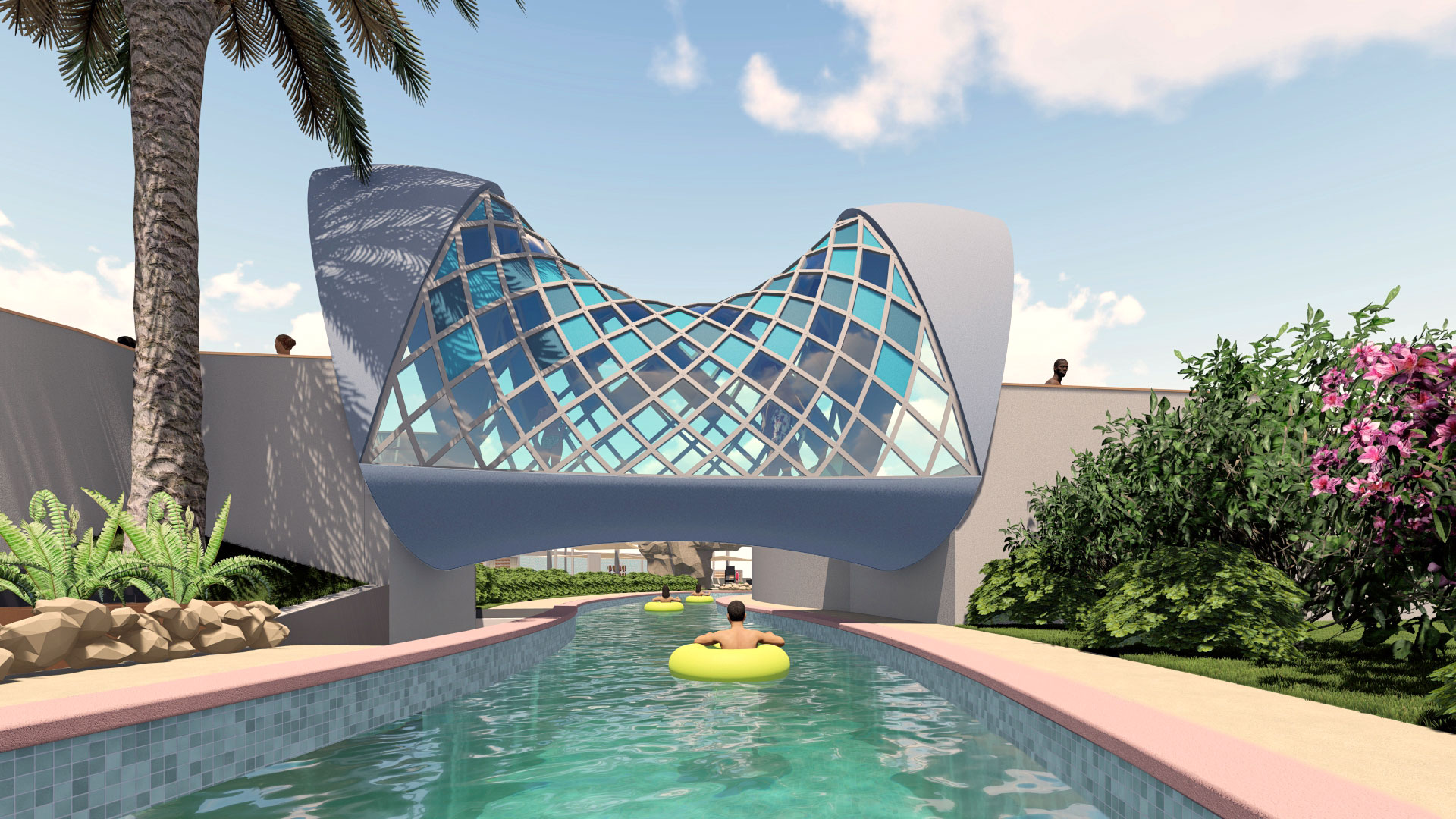It is common in a water park to use bridges to connect different areas. Sometimes they are used to bridge topographical differences in height and on other occasions to allow users and bathers to cross over the pools, or the course of the lazy river.
When designing a water park, we must be coherent with its theme in each of its details, including the bridges. In this way, we will try to ensure that they serve the story it tells, that is to say, the theming of the water park. This determines whether the design and construction of the bridges are made of wood, artificial rocks or other techniques and theming. In the example presented here, we propose a futuristic design, based on three-dimensional geometries.
The central body of this bridge has a paraboloid shape, and presents a rhomboidal mosaic design that forms a tunnel. Each end is also accentuated by an arch that gives way to users and bathers. At the lower end, on the other hand, we have provided a cover that conceals and embellishes its structure, so that the bridge as a whole is unified in a solid and complete design, ready for construction.
The upper mosaic is composed of opaque and transparent panels. The opaque panels come in different colour shades and, although they are arranged randomly, they preferentially occupy the upper part. Therefore, the design ensures that, once constructed, the tunnel will block solar radiation. In contrast, the transparent panels are concentrated on the sides, opening up views of the lazy river and the rest of the water park, whilst at the same time protecting those who pass through, from falls.
By Tianshu Liu, senior architect in Amusement Logic’s architecture department.







